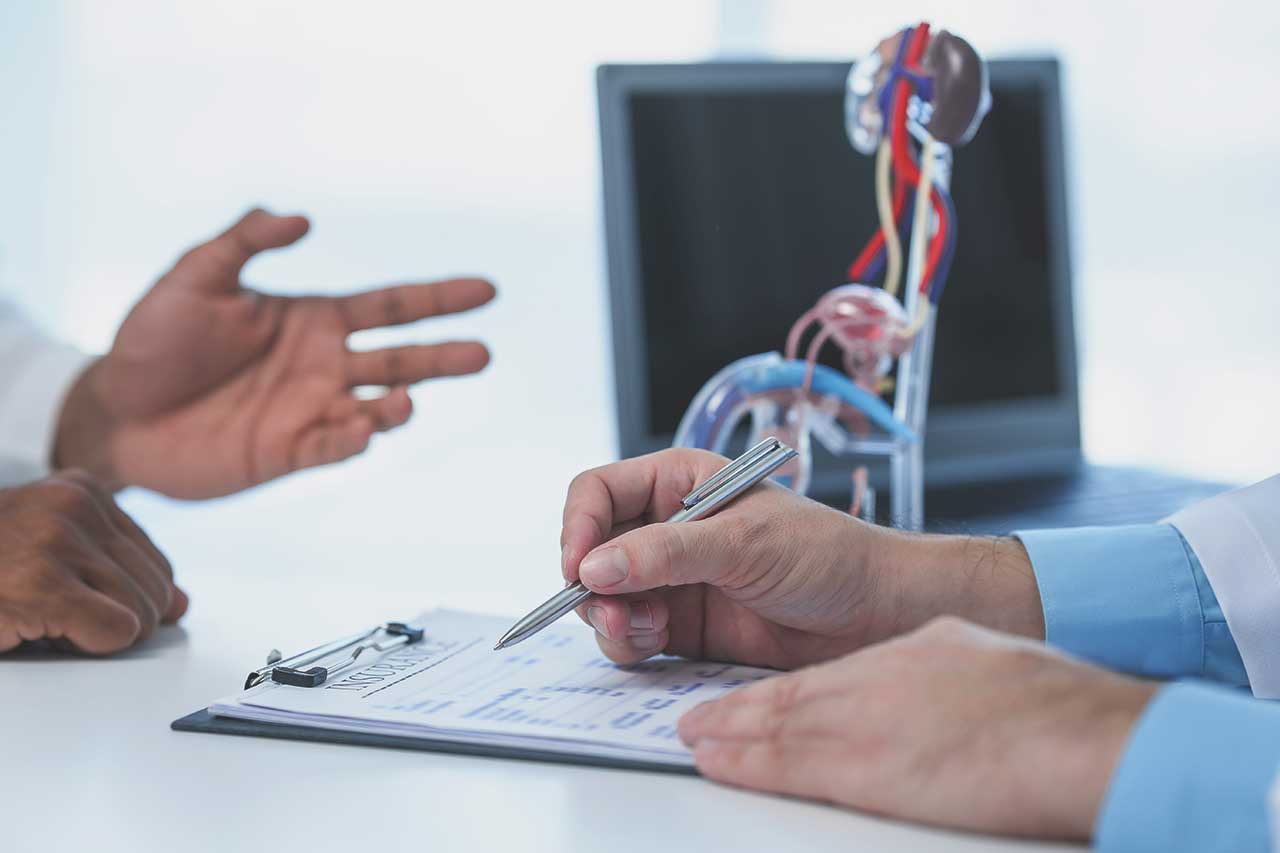Transperineal Prostate Biopsy
Harley Street, London
If you have been advised to undergo a transperineal prostate biopsy by Mr Raison or another urologist, it’s natural to have questions about the procedure, what to expect, and the associated risks. This information is provided to help you understand the process and prepare you for the procedure.
What is a Transperineal Prostate Biopsy?
A transperineal prostate biopsy is a procedure performed to check for prostate cancer. It involves using an ultrasound probe inserted into the rectum to scan the prostate. Under the guidance of this ultrasound, biopsies (small samples of tissue) are taken through the perineum, which is the area of skin between the scrotum and rectum. The procedure can be done under local or general anaesthetic or under spinal. During your consultation you will decide with Mr Raison on the most appropriate approach for yourself.
What Are the Alternatives?
- Observation with Repeat Blood Tests and MRI tests: This approach involves monitoring PSA levels over time and proceeding with a biopsy only if the PSA levels rise or there is change on the MRI scan.

The Procedure
On the day of your procedure, Mr. Raison, or a member of his team will review your medical history and medications. The procedure will be explained to you again to ensure you understand and consent to it. If a general anaesthetic is performed, an anaesthetist will discuss this with you, including how pain will be managed afterward.
If general or regional anaesthesia is used, you might be given compression stockings to wear to help prevent blood clots. Whether you continue to wear these at home will be decided by your medical team.
Details of the Procedure
- Preparation: You may receive an antibiotic tablet or injection before the procedure to prevent infection, depending on local policies and your allergy history.
- Positioning: You will be positioned to allow Mr. Raison to access your perineum. The area will be cleaned with an antiseptic solution.
- Procedure: A local anaesthetic is applied to numb the area, which might sting for a few seconds. The ultrasound probe is about the size of a thumb and helps guide the biopsy needles into place.
- Biopsy: Comprehensive sampling from the prostate will be performed. MRI images will also be used to guide the biopsy.
- Duration: The procedure typically takes 30 to 45 minutes. If performed under local or general anaesthesia, you can usually expect to go home after a few hours
Are There Any After-Effects?
Here are some potential after-effects you might experience:
- Blood in Urine: Almost all patients may notice blood in their urine for up to 10 days.
- Blood in Semen: This is very common and can last up to six weeks, posing no risk to you or your partner.
- Bruising: Some patients experience bruising in the perineal area.
- Discomfort or Temporary Erectile Problems: Bruising can cause discomfort or temporary problems with erections in some patients.
- Urinary Retention or Clot Retention: A small percentage of patients may experience difficulties in passing urine or clot retention.
- Infection or Sepsis: Although rare, there is a small risk of infection, which may require antibiotics, or sepsis, needing emergency treatment (Transperineal biopsies-3).
What to Expect When You Get Home
After the procedure, you will be advised to:
- Drink plenty of fluids to help clear any blood in the urine.
- Expect to see blood in the semen for several weeks.
- You may receive antibiotics or other medications before leaving the hospital.
- You will receive instructions about recovery and follow-up appointments.
If bleeding in the urine doesn’t stop or if you’re unable to urinate, contact your GP or Mr. Raison immediately.
Follow-Up
Your biopsy results will be reviewed by Mr. Raison within 7-10 days, and he will discuss the results and any further steps with you during a follow-up appointment.
Mr Raison is available for private urology consultations, treatments, and surgical procedures at The London Clinic, Harley Street.
